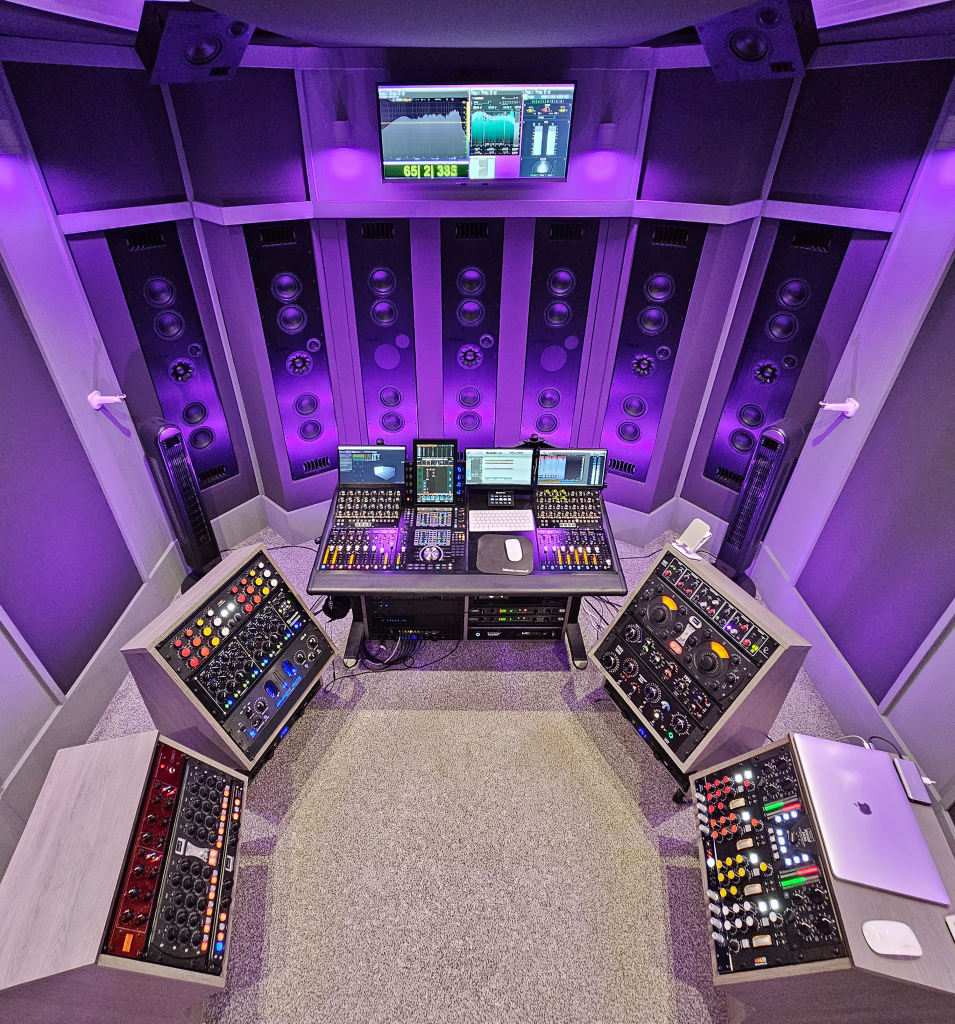This website uses cookies so that we can provide you with the best user experience possible. Cookie information is stored in your browser and performs functions such as recognising you when you return to our website and helping our team to understand which sections of the website you find most interesting and useful. You can read our full privacy policy here.

TV / FILM MIXING & MASTERING FAQ
Film mixing and mastering are crucial stages in the post-production process of filmmaking, primarily focused on the audio elements of a film. Film mixing, also known as sound mixing or re-recording mixing, is the process of combining and adjusting all the individual audio elements of a film to create a final, balanced soundtrack. This includes dialogue, music, sound effects, and ambient sounds. The goal of film mixing is to ensure that the audio elements work together harmoniously and contribute to the overall storytelling experience. It involves adjusting the levels, panning, and EQ of each sound element to achieve clarity, realism, and emotional impact.
The primary purpose of film mastering is to optimize the audio for the specific requirements of different playback systems and platforms. This includes ensuring that the audio meets industry standards, is properly balanced, and is compatible with the technical specifications of the chosen distribution medium.
What Studio Is TV / Film Mixing & Mastering Performed In?
All TV and film mixing and mastering is performed in Studio B by Paul Ashmore. Studio B has been fitted 9.1.4 Dolby Atmos system including Trinnov optimisation for perfect audio playback.
What Is The Turnaround?
Turnaround time greatly depends on the project and how much is involved. We always recommend leaving at least a month for the entire process to be completed on larger film. Revisions can often take some time depending on the film. If you have a deadline please contact us beforehand to discuss if the deadline is possible.
How Many Revisions Can I Make?
We do not limit the amount of revisions you can make with film and TV projects. We understand after working on various film and TV projects there are often a lot of revisions required by multiple different people and departments within the project. For this reason we don’t feel it is helpful to limit the amount of revisions.
Can I Speak With The Engineer Before Placing My Order?
Yes, before we start your project we can discuss anything you may need to talk about, over the phone or via a Zoom call. A full list of contact information can be found here.
Can I Get A Bespoke Quote Or An Independent Film Discount?
Yes, we understand different films have different budgets and that projects need to stick to a certain budget. If you would like to discuss your project and budget please contact us using the contact form here.
How Should I Send My Files?
Your stems can be uploaded safely and securely via our upload form in your account here. Leave any processing you may have active if it is part of the film.
- File Type: Wav
- Bitrate: 16/24/32bit
- Sample Rate: 48kHz – 96kHz
- Headroom: -3db / -6db
It is important to separate stems as much as possible. We advise each actor has their own stem and no audio overlap. A typical small film will break down as follows.
- Atmos (2 Stems)
- Backing Noise
- Foley (3 Stems)
- Sound Effects (3 Stems)
- Music
- Dialogue (10 Stems)
How Far Should I Take The Audio Mixing On My Film?
We advise taking the mix as far as you can so that you have a finished draft of the movie ready to mix.
Should I Send The Finished Film With The Stems?
Yes, we will need the finished film as a reference for where to pan sound and to be able to fit the audio to the mood on the on screen visuals. The film must not be subject to change once mixing has begun.
Can I Put Multiple Different Sounds On One Stems?
Yes, as long as they do not ever overlap with another stem. This allows you to keep the stem count to a minimum.
When Do I Pay For The Service?
Orders / payment must be made before work on your song begins. This ensures our engineers, take the necessary time and care required to return you the very best master.
How Do I Send My Files?
Your mixes can be uploaded safely and securely via our upload form in your account here. Bypass any compression / limiting you may have on your master bus before printing your mix ready for mastering.
- File Type: Wav
- Bitrate: 16/24/32bit
- Sample Rate: 44,1kHz – 96kHz
- Headroom: -3db / -6db
What Will I Receive Back?
Stereo masters are returned in the following formats, if you require any others, please let us know:
- 96kHz 24bit wav
- 48kHz 24bit wav
Dolby Atmos masters are returned in the following formats:
- 48kHz 24bit wav ADM
- 96kHz 24bit wav ADM
- 96kHz 24bit wav binaural mix
- 96kHz 24bit wav re-renders
- 768kbs mp4
Can I Credit Audio Animals For The Mastering?
Yes, if you would like to credit Audio Animals for the mastering of your music you can do so. Please credit Audio Animals Ltd and either Paul Ashmore or Nick Burchall as the mastering engineer. This is not required but is greatly appreciated.

